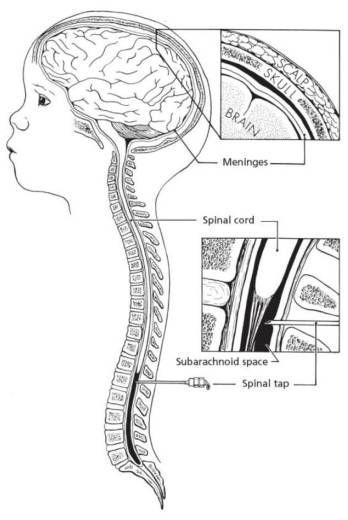Lumbar puncture for newborn
Please note, this page is printable by selecting the normal print options on your computer.
What is it?
A lumbar puncture is a procedure to collect a small amount of fluid, called Cerebrospinal Fluid (CSF) that surrounds the brain and spinal cord.
Why does my baby need it?
The lumbar puncture is done to check if your baby has a serious infection called meningitis. It can also be done to check for bleeding around the brain and spine.
What does it feel like?
Your baby may be uncomfortable during the procedure, feeling the cold of the cleaning solution and a few seconds of pain as the needle is put in, similar to having a blood test. The team doing the procedure will ensure your baby remains well, and may give some sucrose to keep your baby settled and comfortable throughout. We advise parents not to be present as it can be unpleasant to witness.
How is it done?
To get the sample a doctor or Advanced Neonatal Nurse Practitioner (ANNP) uses a sterile technique and cleans the skin of your baby’s lower back with a special cleaning solution. A healthcare professional will hold your baby in a curled up position and the doctor puts a thin, hollow needle into the small of the back to collect the fluid. The needle is then removed and the area is cleaned, a special sealing solution is applied and the area covered with a plaster. The whole procedure will take up to an hour to do.
What happens next?
The fluid will be sent to the lab and initial results will be ready within a few hours. A doctor/ANNP will come and speak to you as soon as possible to let you know what these results mean. A culture of the fluid to identify specific infections will take a few days before it is ready. When all the results are ready the team looking after your baby will inform you of the intended treatment plan your baby will need.

Talking with your Doctor/ANNP about this treatment
Lumbar punctures are generally very safe and complications are rare. Talking to the doctor/ANNP before the procedure is the best way to learn about the benefits and risks, so please ask them any
questions you have and make sure you understand the reasons for doing the procedure. This is important because we will ask you to give verbal consent on behalf of your baby.
The following table lists the benefits and risks of a lumbar puncture:
| Benefits | Risks & complications |
|
|
